Two Voices Secret.
Coco Moya and Amelie la Maga.Performative sound conference ASMR. 10 minutes. 2017-2018. With Amelie the Wizard. Photo: Exhibition at Sala Borrón, Ovideo.
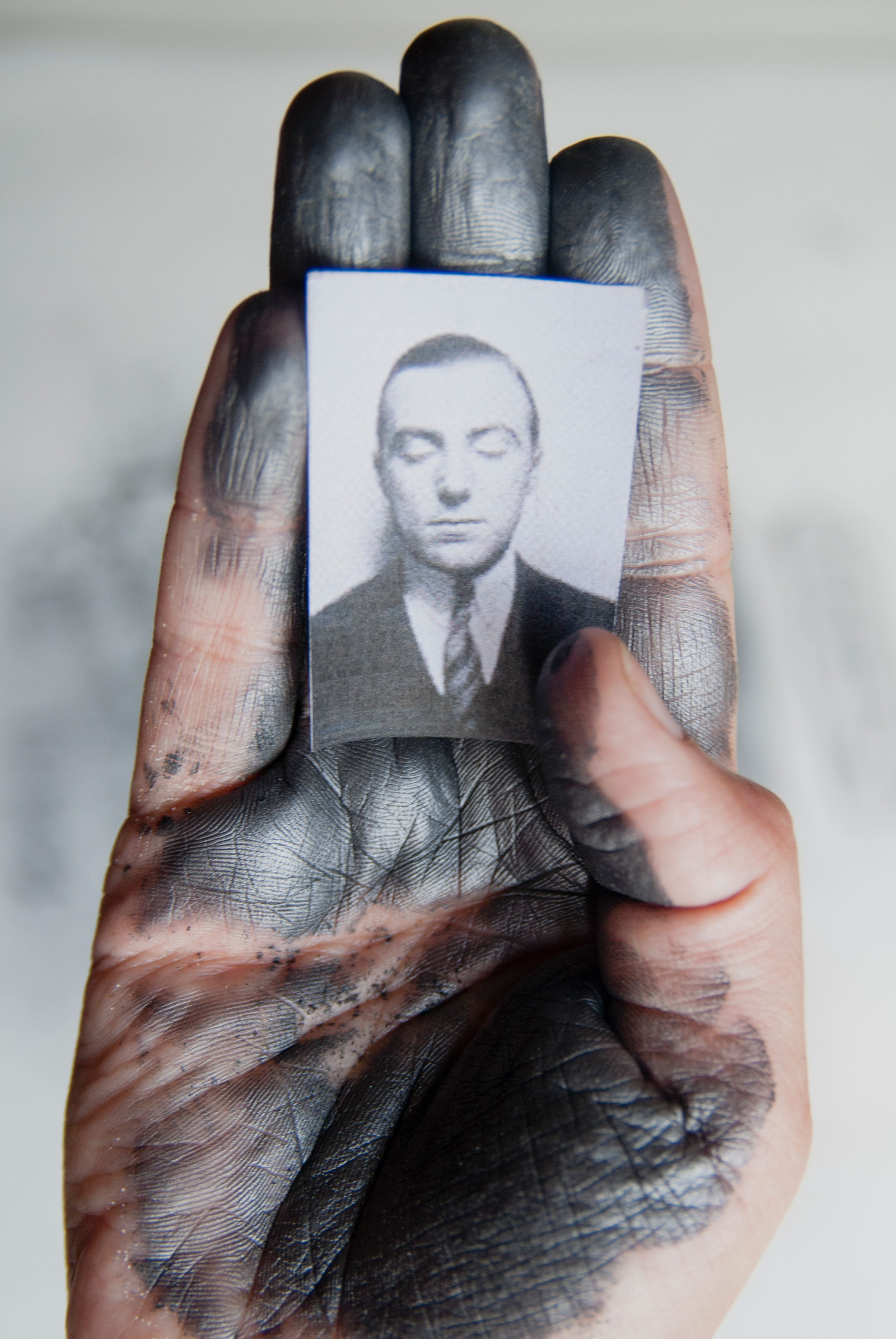

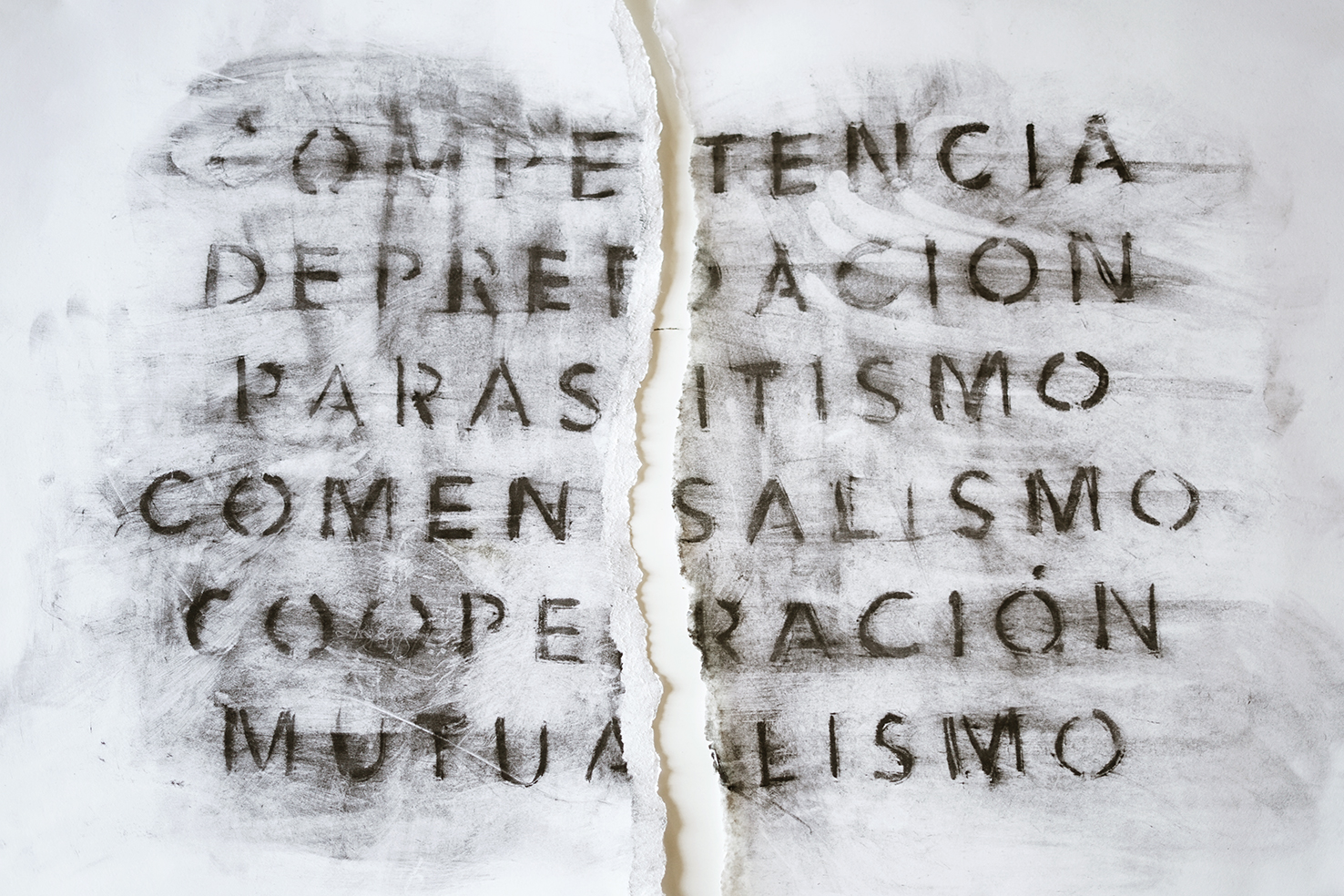

Two voices secret. Coco Moya and Amelie la Maga. Performative sound conference ASMR. 10 minutes. 2017-2018. With Amelie the Wizard. Photo: Exhibition at Sala Borrón, Ovideo.
“Two voices secret” is a performative conference for four hands and two voices, where an artist and a magician make the women of art history disappear, using the techniques of the Secret Society and other supernatural tricks. They explore the transmission of the secret and its power through hands and sound, showing the resistance capacity of a group outside mediation channels, where delocalized or networked oral memory is practically indestructible.
On how secrets Desire Us
Performative Conference







On how secrets desire us. (De cómo los secretos nos desean) Performative conference on secret and invisibility as a soft power. Coco Moya. For the program “Pero esto es arte...?” at CA2M museum, (2020) WATCH SECRET VIDEO ︎︎ ︎︎︎
A Room of One´s Own
Interactive Sound Installation
 A room of one´s own. Interactive sound installation. Tablet, Tripod, WhatsApp group, sound. Coco Moya (2016).
A room of one´s own. Interactive sound installation. Tablet, Tripod, WhatsApp group, sound. Coco Moya (2016).The general concept of the exhibition was based on the structure of a house open to the visitor, so that he himself could explore and use the space as a meeting and exchange place. This installation generated a virtual common space, an online living room, or a door behind the bathroom where people could communicate and leave messages. In the bathrooms of the room, a tablet connected to Whatsapp was arranged in which you could write directly, or through your own mobile. Within the group, which included some 70 people unknown to each other, audios were sent where they discussed the disappeared women in the history of art, and more generally about the daily practices of the invisible.
Closely related to amateur radio listening practices, still current in online format, where each user is a receiver and transmitter at the same time. This made it possible to open a gap within the room so that opinions could be expressed that were not mediated by the institution, and come into contact in some intimate way with unknown people. This collective radio was working during the exhibition and at the end the group was destroyed.
Copy with no original
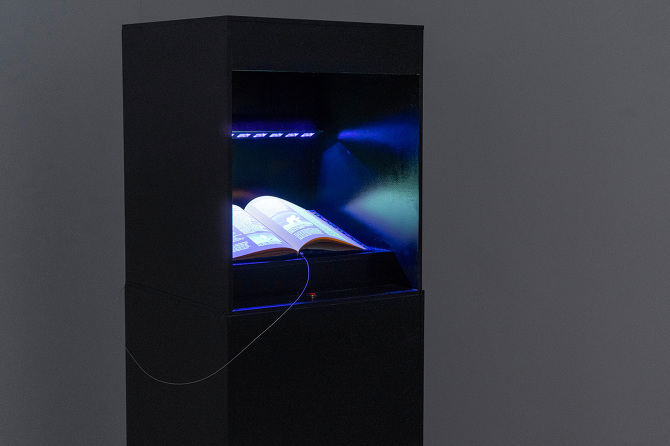
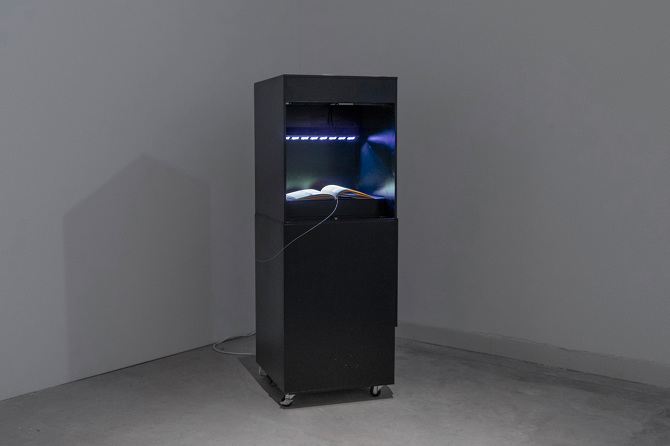

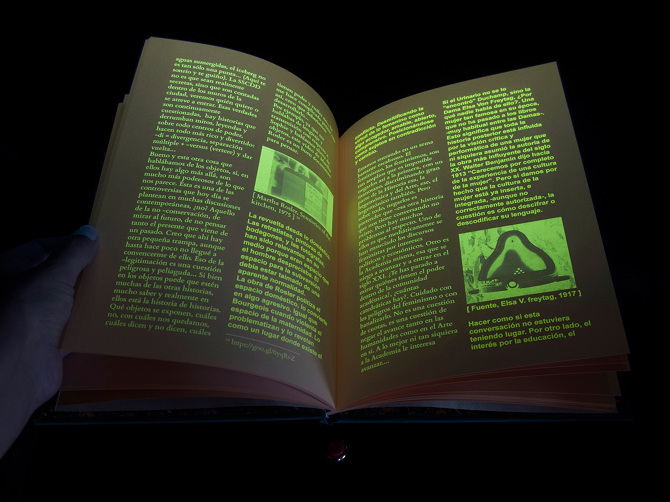


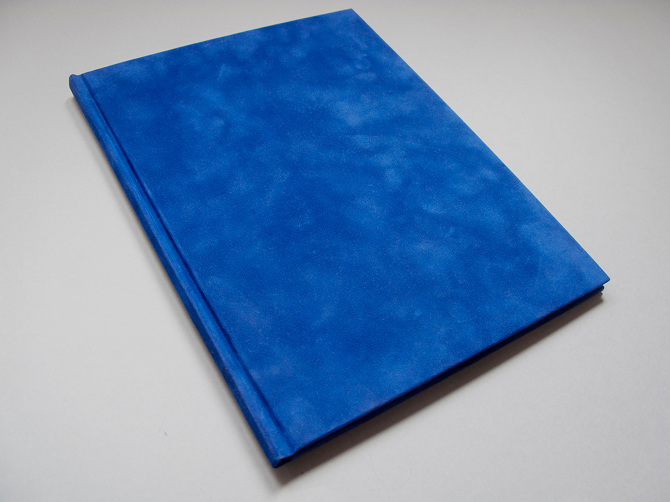 Copy with no original and Thinking the other book. Installation. Wood, Laser printer, camera, arduino, UV lamp, invisible book (thinking the other) and paper. Size: 1,50cmx60cmx60cm,
Coco Moya. (2017)
Copy with no original and Thinking the other book. Installation. Wood, Laser printer, camera, arduino, UV lamp, invisible book (thinking the other) and paper. Size: 1,50cmx60cmx60cm,
Coco Moya. (2017)Circuitos Prize Exhibition.
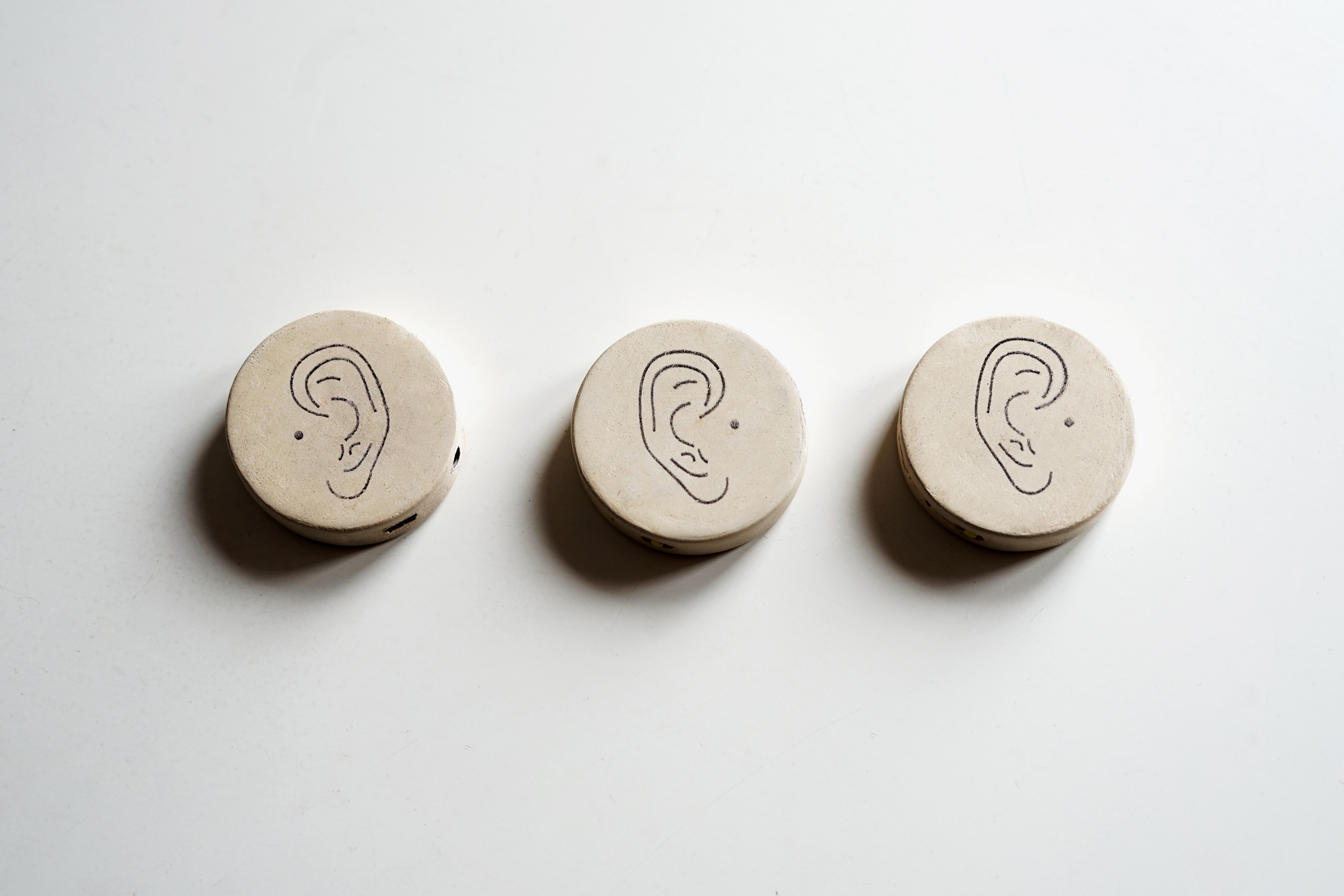
Invisible ink is used in some publications to prevent photocopying. To the naked eye the ink is not visible, however when trying to make a copy, the watermark prevents it from being read. In this case, we reverse the process, and the text is written in invisible ink. When we see the book, touch it and open it, we see only blank pages. But when making a copy we can see the text on the new paper.
A book that exists only if it is copied, only if someone wants to take it away.
The content of the book forms a reflection on the oral transmission of another story, the story of erased women, and how to tell it, through the perspective of society itself.
Reflecting on invisibility and collective transmission as acts of resistance and existence.
︎ Extract from the curator Carlos González Mayordomo:
“Thinking the other is presented as an epistolary essay built from the artist's conversations with agents of the Secret Society. Upon opening it, the scopic disappointment responds to our curiosity through some bleak blank pages; but if we use the photocopying machine that Moya has left at our disposal, the replica converts the invisible ink into a legible text.
This activation of the content transforms the original into a supposition and the copy into a witness to a possibility that oscillates between the real, the fictitious, the possible and the plausible. Because, as the artist has pointed out, paraphrasing Hakim Bey: «It is not a question here of knowing whether or not there is a secret society, but that the thesis starts from the fact that it has already been created, is being created, and will continue to be created while we're here talking." The Secret Society does not have spectators, but participants. His memory is transmitted through people while objects serve only as information conduits.
The ladies that make up this society remain hidden because they know that the issue of visibility requires something more than presence or quotas; It requires, above all, a profound intervention in ideological, social and cultural discourses, so that the multiplicities and singularities are not reduced to a simple process of tolerable integration according to the parameters set by the hegemonic identities.”

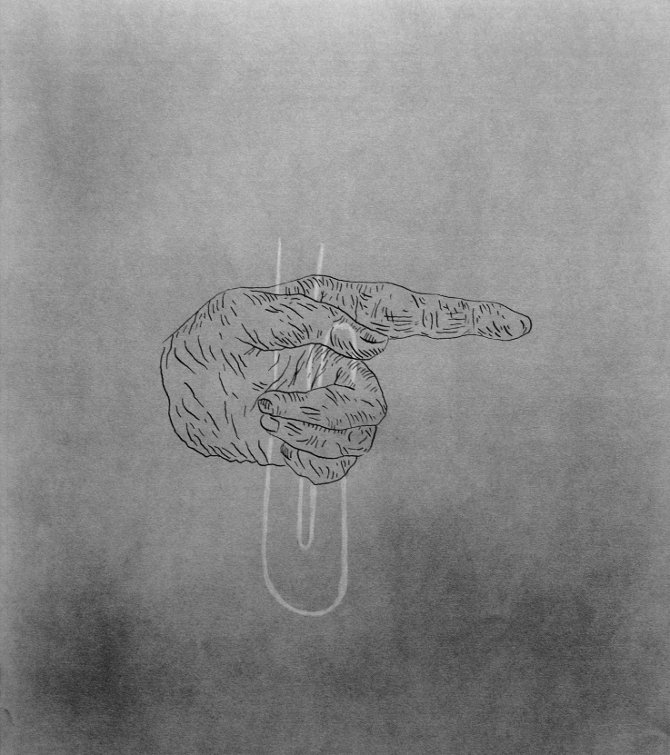

In this series of drawings, the rope and its manipulation are shown as if it were a magic manual, where the steps to perform a trick that consists of cutting a rope and restoring it magically, rehabilitating its bond are explained. However, in this sequence the magician's secret is not revealed, but remains latent in the drawings, which appear as a cryptic language only understandable to those initiated into the secret. It is inspired by the fanzines that magicians sold at the end of their performances, revealing some of their tricks with little visual instructions like this one. The Latin title refers to what Giordano Bruno considers to be precisely magic, the ability to make and break bonds at will. Consider love as the bond of bonds above all: the vinculum vinculorum.
Secret Society of the City of Ladies
(SSCDD)
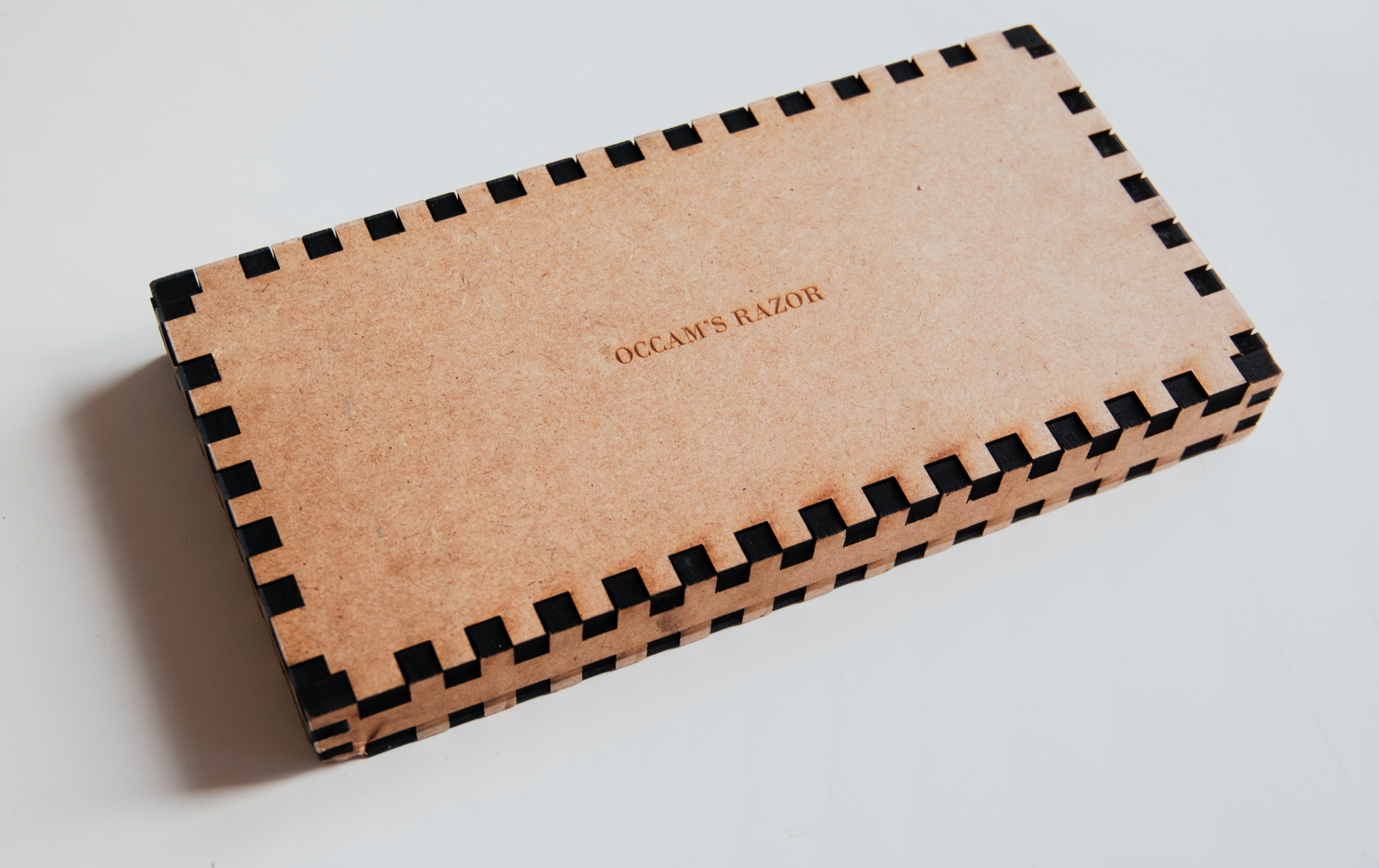

Ockham's fake razor. Fake knife and box, size: 20cmx17cm. Coco Moya. (2017).
The word has not been recognized as a virus because it has reached a state of symbiosis stable with receiver.
W. Burroughs. The electronic revolution
The Société Secrète de la Cité des Dames is one of the central components of many of my works. The SSCDD is a secret society that has kept women hidden throughout the history of art. The research tried to recover the lost history of my female references, in an exercise of Intimate Revolt, that is, recreating history to multiply the stories of what happens.
The intimate revolt is the practical philosophy of a poetic terrorism that settles in contradiction, and questions history with counter-memory strategies that we understand as Fake.
The Fake strategy – the false that masquerades as true – hijacks the effect of the real temporarily and opens us up to the potential of a utopia or a dystopia. It opens us to the possible for a brief moment only until the moment of its unveiling, and with it its extermination. Its triumph, therefore, is to end up being discovered, since the objective of staging Fake as a revolt is not to establish itself as a new order, but to open that fragile interval that prints a critical, self-aware gaze. Reviewing and disassembling our simulations-truth, and the mechanisms of reality production.
From the perspective of the Fake, the culture in revolt is a radical culture of simulation and camouflage. It disfigures what we consider real and what we understand as History, disguising itself with its own appearance, under its same apparent normality, formalism and decency. Like a Trojan horse.

Charcoal on paper. Size: 1,20x2m. Coco Moya. (2015)
* This research has been possible thanks to the support of scholarships and awards, such as the Collaboration Scholarship of the Vice Dean of Culture of the Faculty of Fine Arts UCM (2014-2016), Gender and Figure (2015), Program Without Credits (2016), a residence a Casa de Velázquez. (2017) and the Circuits award (2017).
Everything that is possible to happen will happen.
Leibniz's Anti-Ockham's Razor





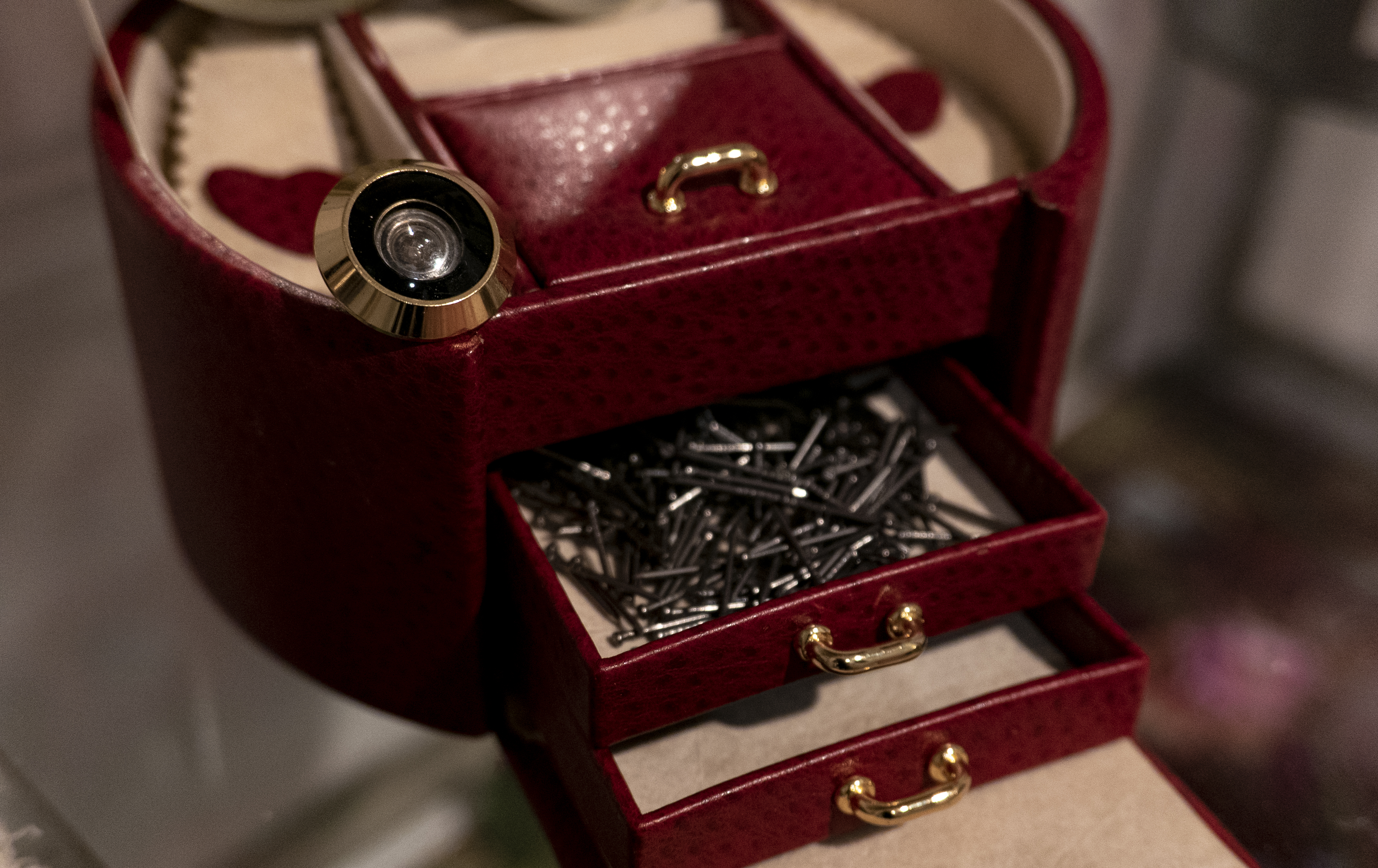

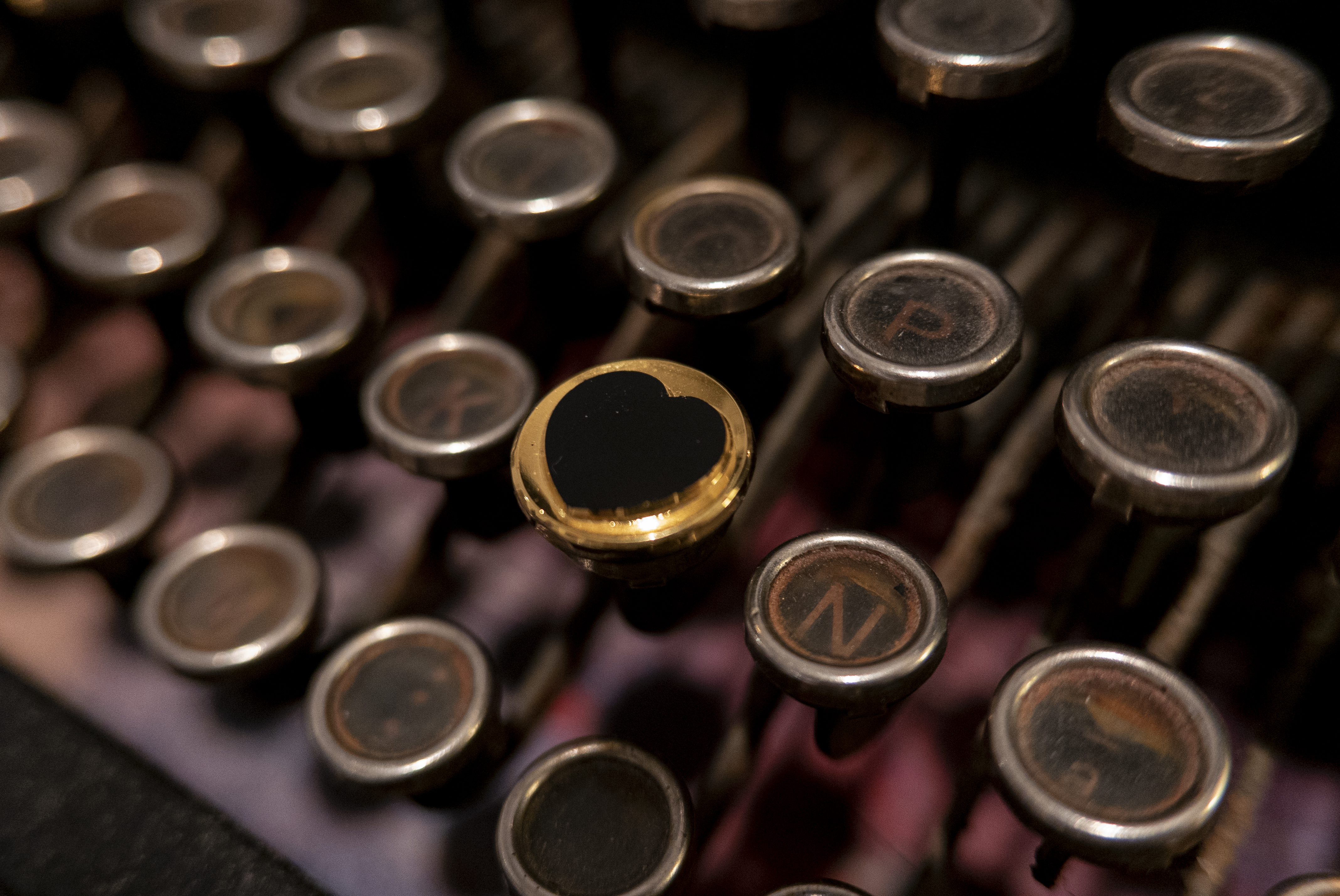
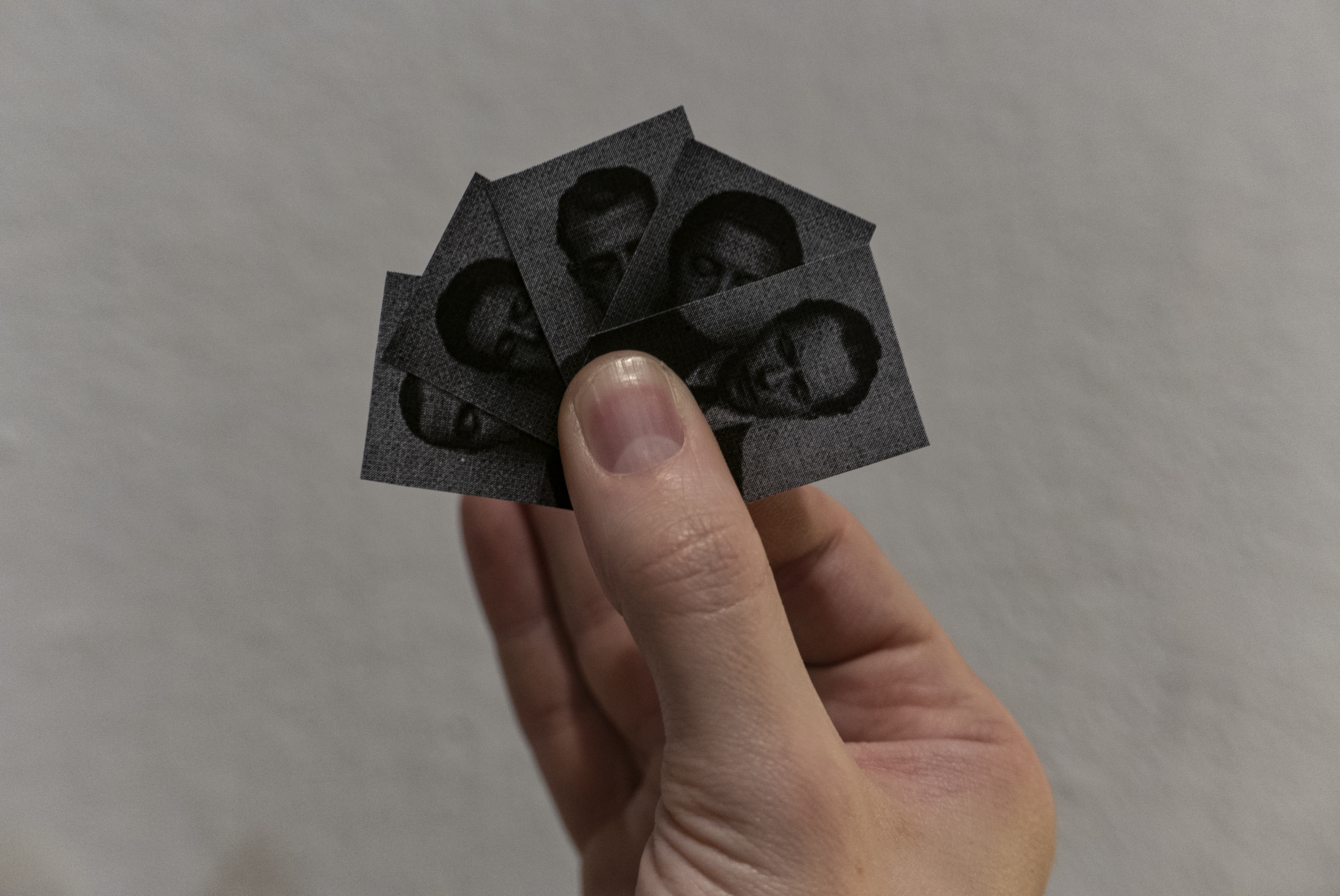
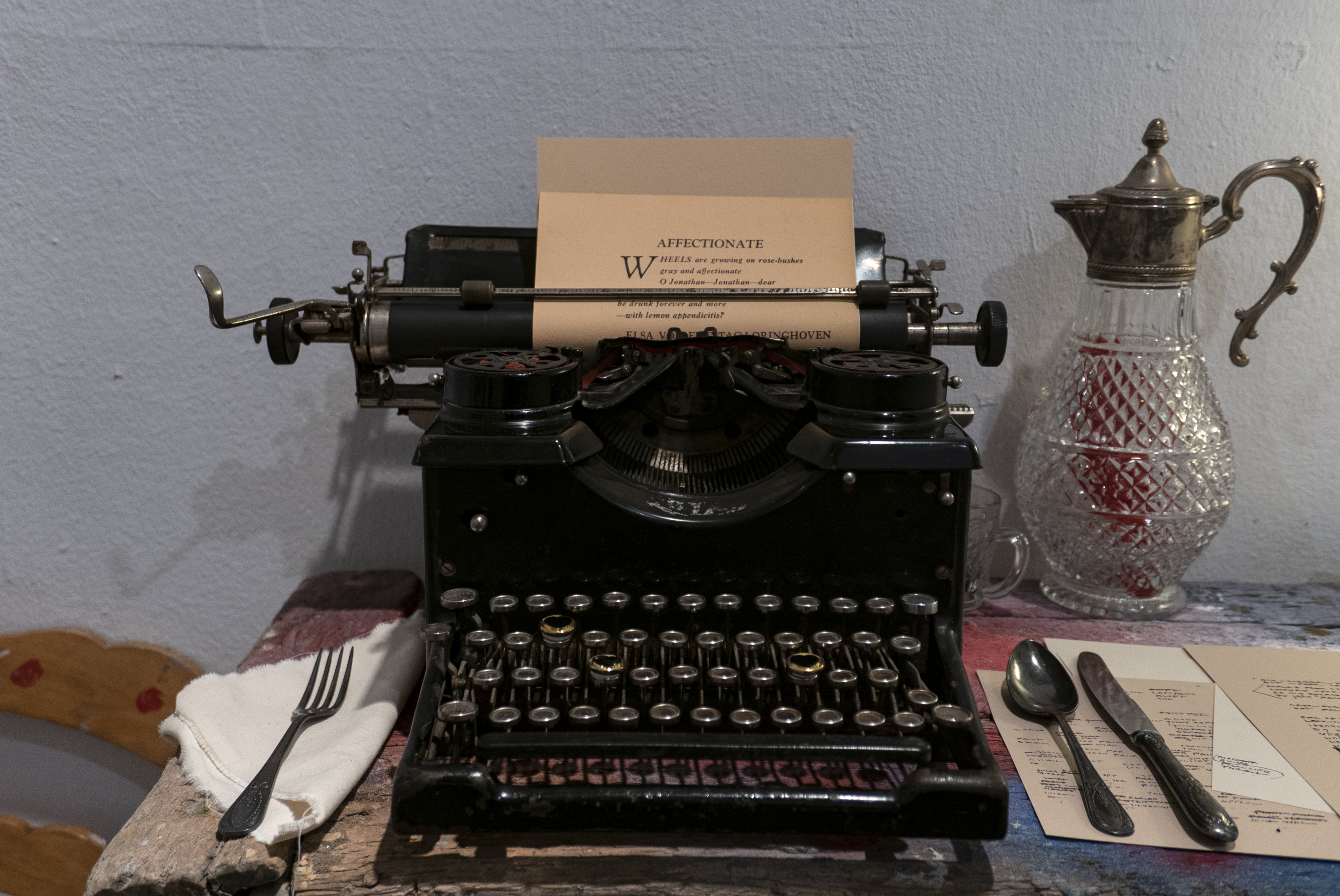
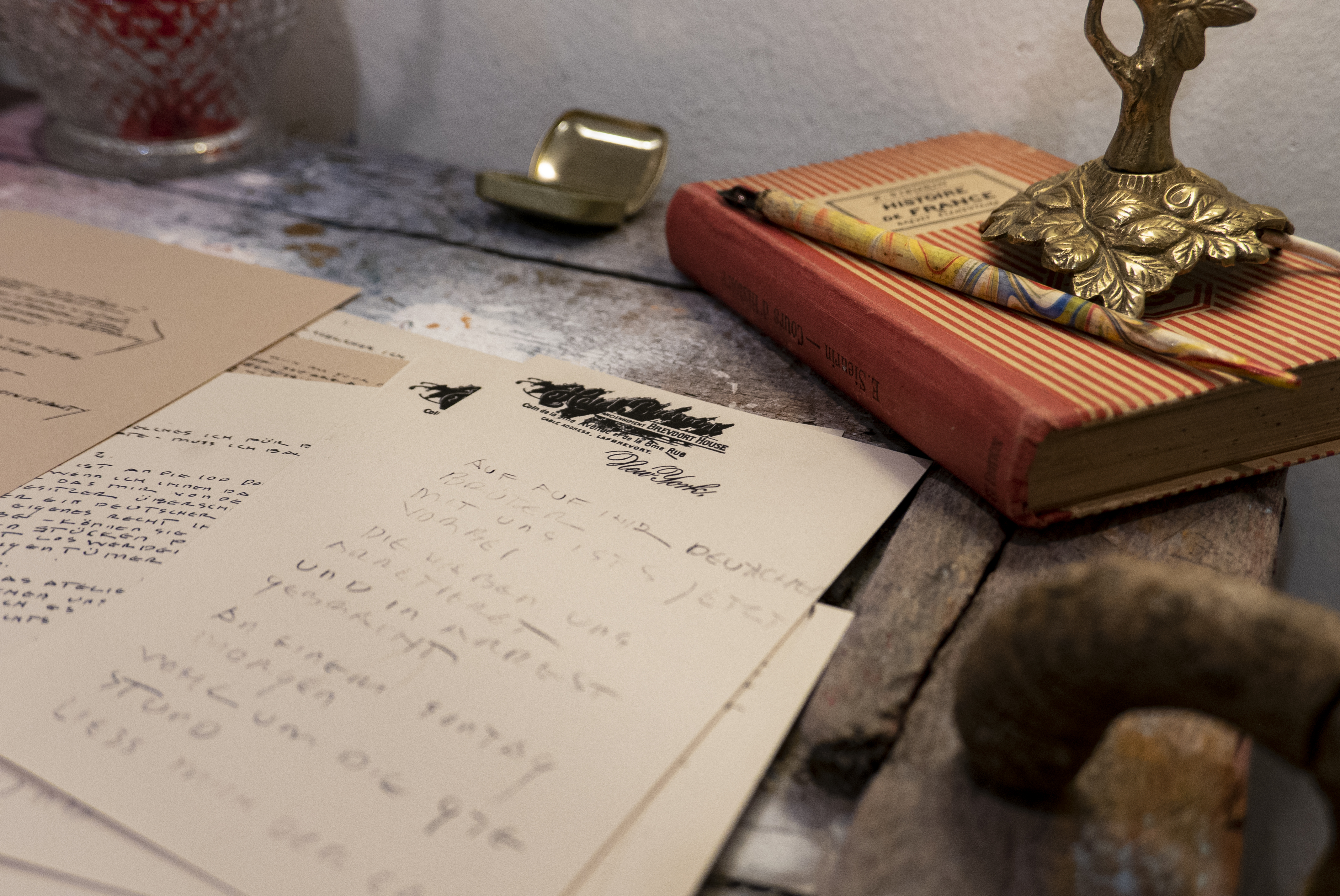


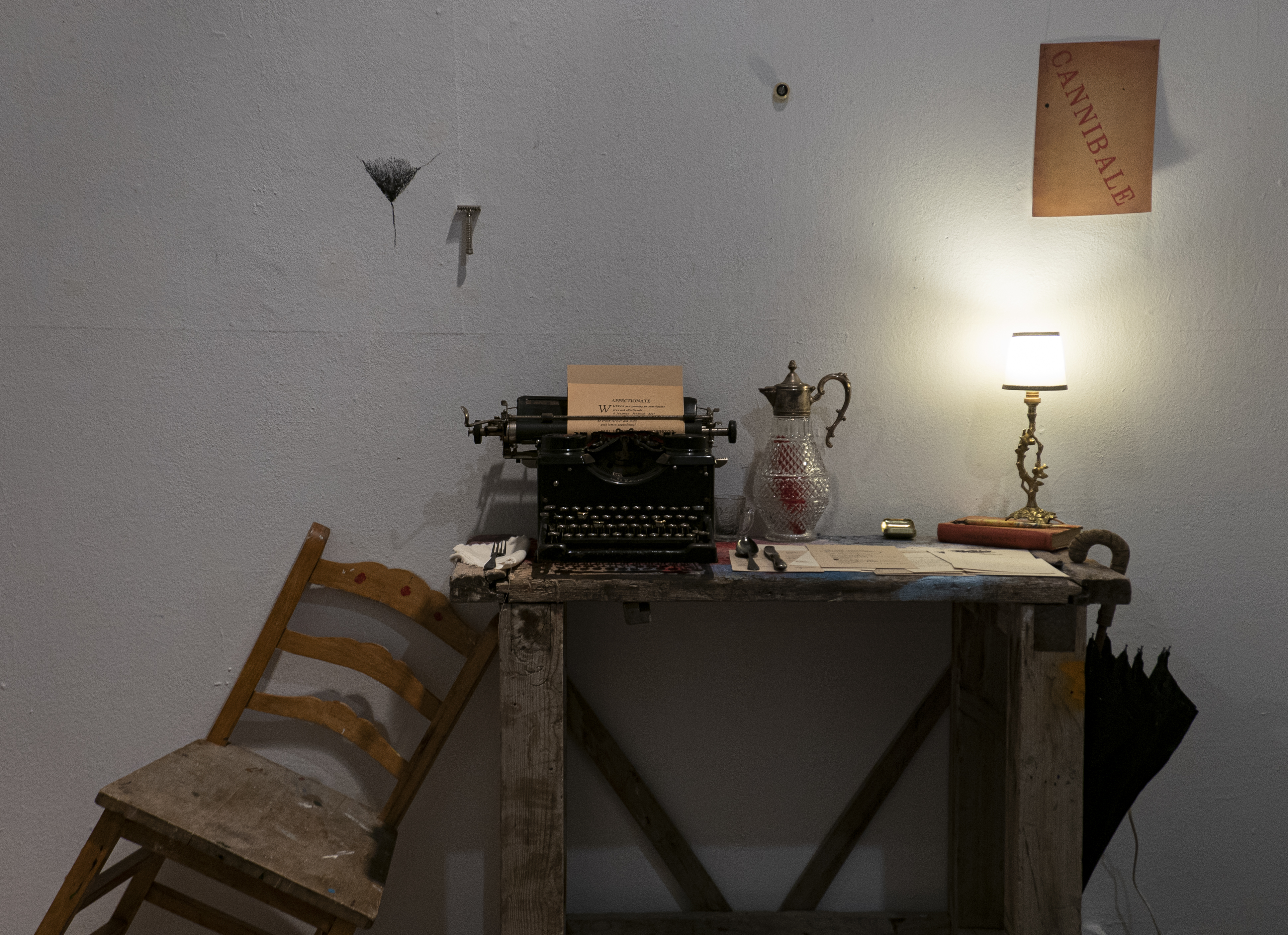
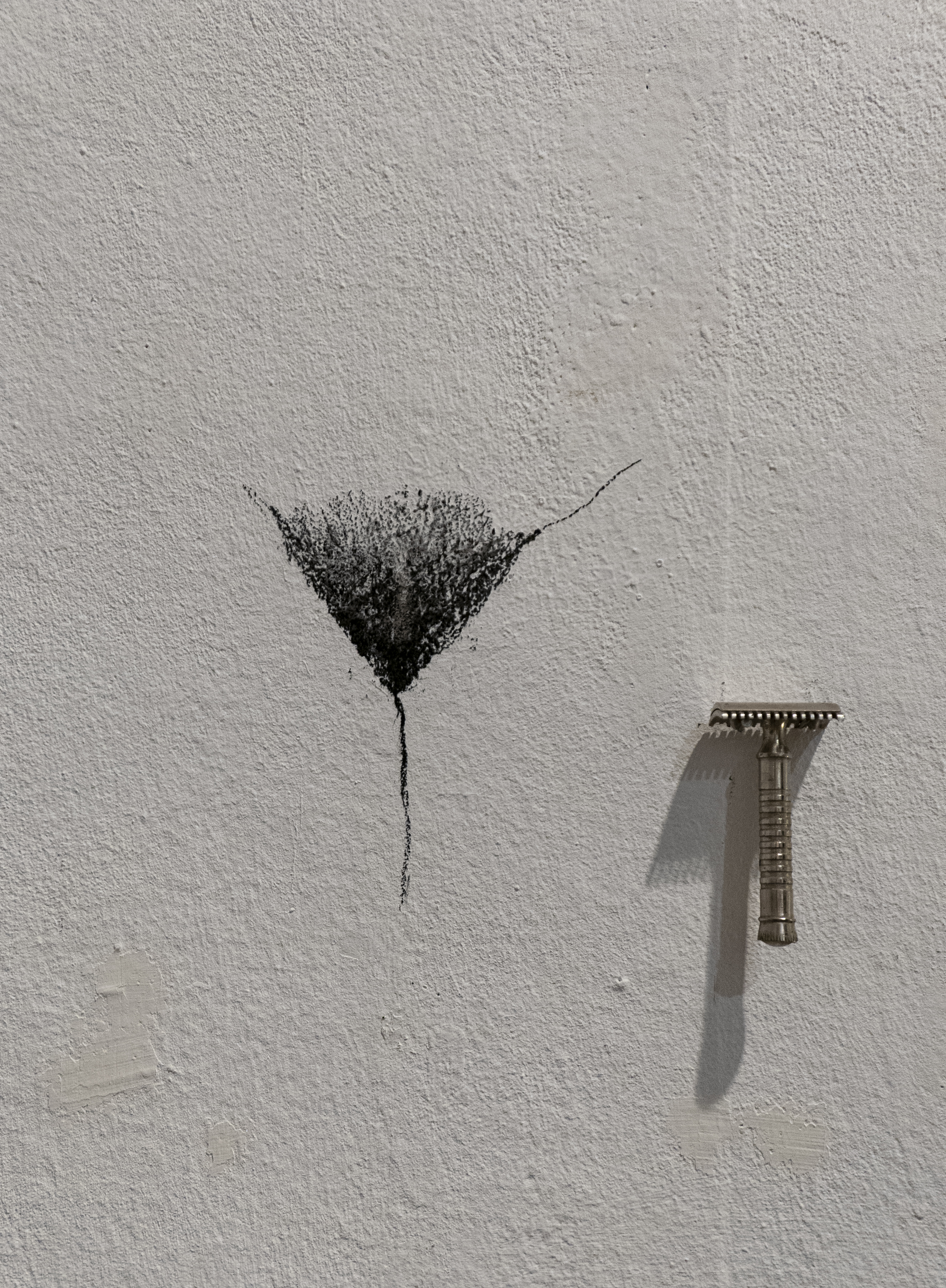
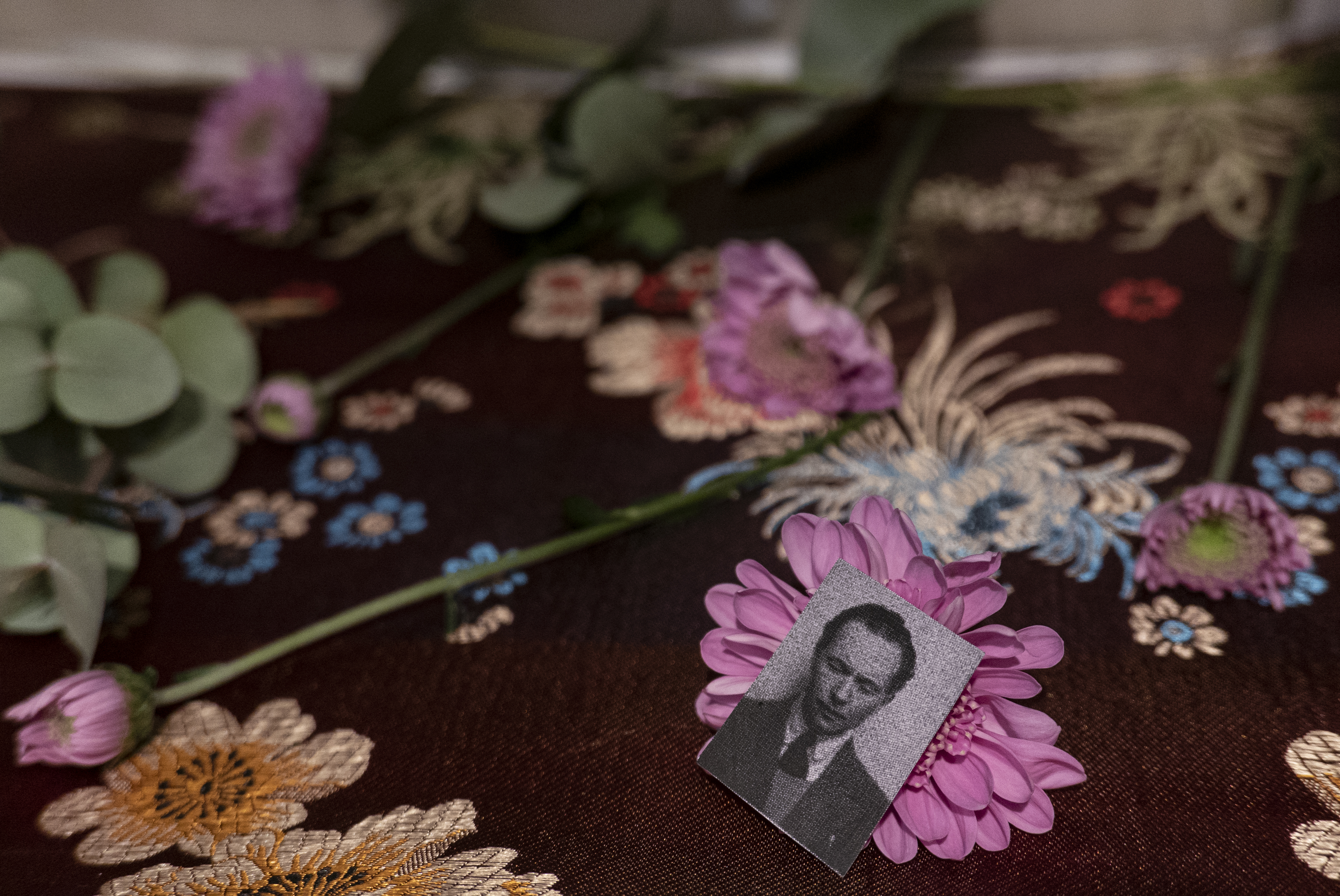

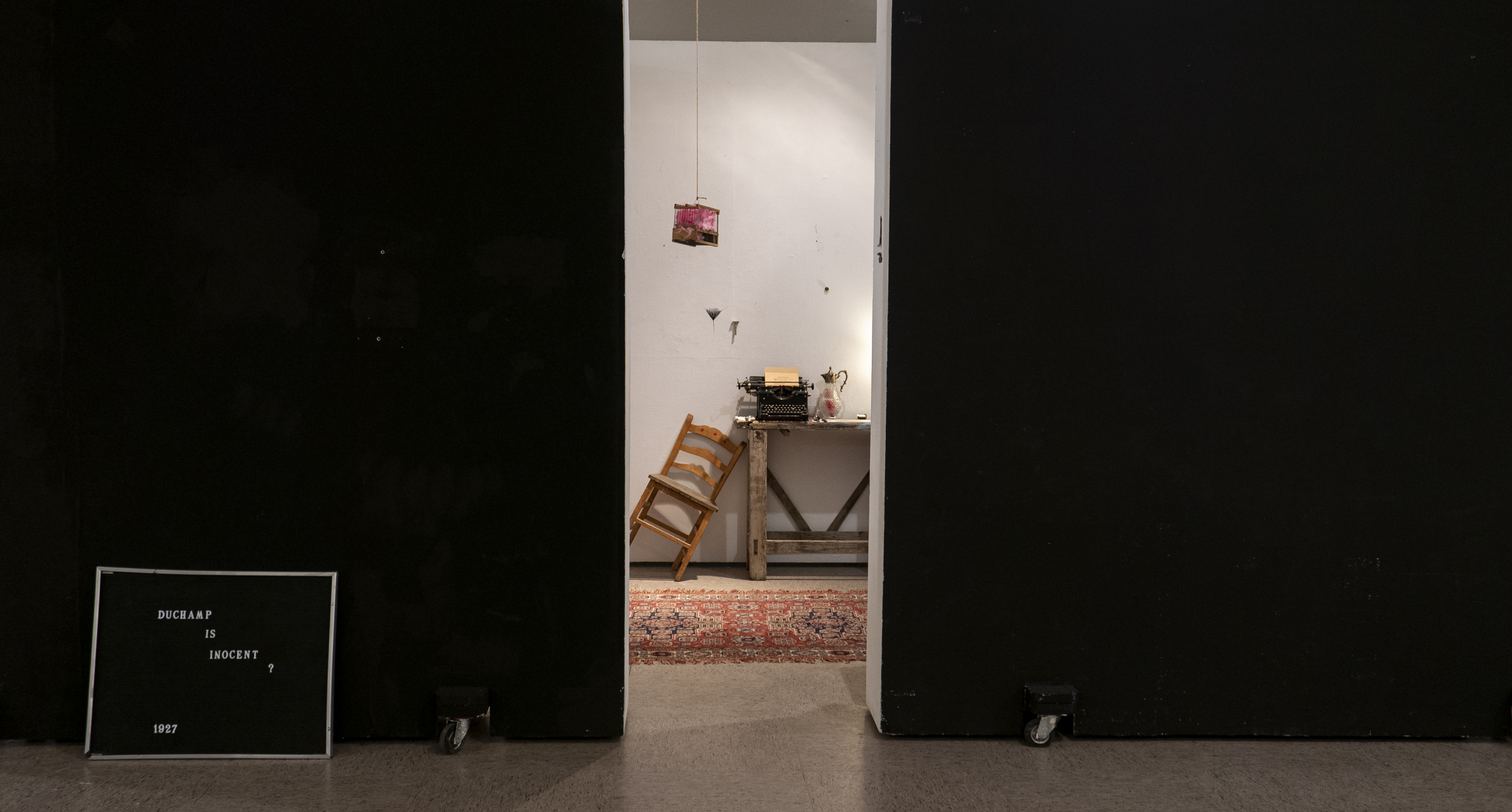
Ready Fake was an exhibition as an enigma. The interior of a room was considered, where objects belonging to a character from the SSCDD were found. Some clues pointed to Duchamp, although in reality it was Elsa Von-Freytag, the true author of the famous urinal. We reconstructed her room creating an environment of the 1915 era, accumulating objects, clothes, photographs, the white noise of a radio, or a half-finished game of chess, where one of the opponents was about to turn his pawn into a Queen by get to the other side of the board. The space also served as a context for us to plan a workshop, where we could talk about the life of this artist, performer and poet, with the help of Gloria G. Durán, an expert on the subject. Finally, we edited the wikipedia with the information that was missing from your entry.